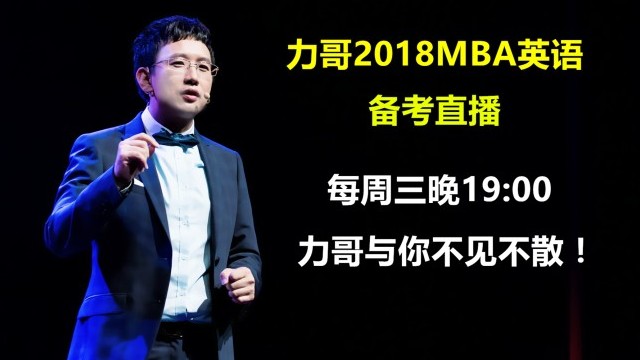英语中有哪些词性变换规则?
在学习英语的过程中,很多同学对于词性的变换都是一筹莫展的,怎么学都学不会。今天我们为大家整理了英语中有哪些词性变换规则,欢迎大家阅读。
一、英语词性转换规则之名词变为形容词的方法
1. 在名词后面加-y可以变成形容词(尤其是一些与天气有关的名词)。例如:rain—rainy, cloud—cloudy, wind—windy, snow—snowy, health—healthy, luck—lucky等。
注意:1)如果名词以重读闭音节结尾,且词尾只有一个辅音字母,这时应双写词尾的辅音字母再加-y。如:sun—sunny, fun—funny等。
2)少数以不发音的e结尾的名词变为形容词时,应去掉e再加-y。例如:noise—noisy, ice—icy 等。
2. 一些抽象名词在词尾加-ful可以变为形容词。例如:care—careful, thank—thankful, help—helpful, use—useful, beauty—beautiful等。
3. 一些表示国家的名词可以在词尾加-ese, -ish或-n构成表示国籍、语言的形容词。例如:China—Chinese, Japan—Japanese, England—English, America—American, India—Indian, Australia —Australian(注意Canada—Canadian)。
4.在名词后加-ous变为形容词。例如:danger—dangerous等。
5. 在名词后加-ly变为形容词。例如:friend—friendly, love—lovely等。
6.在名词后加-less构成含有否定意义的形容词。例如:care—careless(粗心的),use—useless(无用的),hope—hopeless(没希望的),home—homeless(无家可归的)等。
7. 一些以-ence结尾的名词,把ence改为ent变成形容词。例如:difference—different, silence—silent等。
二、英语词性转换规则之动词变为名词的方法
1.词形不变,词性改变。例如:work, study, water, plant等可以用作动词,也可以用作名词。
2. 一些动词在词尾加上-er或-or之后就变成了表示“某一类人”的名词。例如:work—worker, teach—teacher, sing—singer, jump—jumper, play—player, learn—learner, visit—visitor, invent—inventor等。
注意:
1)以不发音的e结尾的动词,在词尾加-r。例如:drive—driver, write—writer等。
2)以重读闭音节结尾,且末尾只有一个辅音字母的动词,应双写末尾的辅音字母,再加-er。例如:run—runner, win—winner, begin—beginner等。
3. 在动词词尾加-ing变成名词(方法与动词变为现在分词的方法相同)。例如: meet—meeting, build—building, wait—waiting, wash—washing, swim—swimming, shop—shopping, begin—beginning等。
三、英语词性转换规则之形容词变为副词的方法
一般在形容词的词尾加-ly可以变成副词。例如:quick—quickly, slow—slowly, loud—loudly, sudden—suddenly 等。但是,以下几点值得注意:
1. 一些以“辅音字母+y”结尾的形容词,要把y改为i再加-ly。例如:happy—happily, angry—angrily, lucky—luckily, heavy—heavily, noisy—noisily 等。
2. 有些以-ble或-le结尾的形容词,去掉e加-y。例如:possible—possibly, terrible—terribly等。
3. 少数以e结尾的形容词,要去掉e再加-ly。例如:true—truly等。但绝大多数以e结尾的形容词仍然直接加-ly。例如:polite—politely, wide—widely等。
4. 以-l结尾的形容词变为副词时仍然要在词尾加-ly,而不是只加-y。除非是以-ll结尾的才在词尾只加-y。例如:usual—usually, careful—carefully, useful—usefully, full—fully等。
英语的词性转换内容
1、动词(v.)→名词(n.)
(a)词形不变,词性改变
例如:work, study, water, plant等可以用作动词(工作,学习,浇水,种植),也可以用作名词(工作,学习,水,植物).
(b)一些动词在词尾加上-er或-or之后就变成了表示"某一类人"的名词
例如:work—worker, teach—teacher, sing—singer,
jump—jumper, play—player, learn—learner,
visit—visitor, invent—inventor,collect—collector等.
注意:
1)以不发音的e结尾的动词,在词尾加-r.
例如:drive—driver, write—writer等.
2)以重读闭音节结尾,且末尾只有一个辅音字母的动词,应双写末尾的辅音字母,再加-er
例如:run—runner, win—winner,begin—beginner等.
(c)在动词词尾加上-ment变成名词
例如:achieve—achievement (成就)
advertise—advertisement//advertising(广告)
agree—agreement disgree—disagreement
amuse—amusement (娱乐) improve—improvement(争吵)
commit(奉献)—commitment develop—development (发展)
depart—department (局,部) govern(统治)—government(政府)
manage—management (管理) equip—equipment (装备)
有些单词比较特殊,需把动词后的e去掉再加ment.
例如:argue—argument(争论)
(d)在动词词尾加上-(t)ion/(s)ion变成名词
例如: attract—attraction; instruct—instruction;
invent—inventiondiscuss—discussion;
express—expressioneducate—education;
graduate—graduation; operate—operation (去e再加"ion")
compete—competition; organize—organization (把e改成其他字母再加"tion")
decide—decision conclude—conclusion (把de改为s再加"ion")
describe—description描写,描绘(这是特例,不规则变化)
(e)在动词词尾加上-ance变成名词
例如: appear—appearance (外貌;出现)
perform—performance (演出)
accept—acceptance (接受)
(f)在动词词尾加-ing变成名词(方法与动词变为现在分词的方法相同)
例如:meet—meeting build—building wait—waiting
bathe—bathing say—saying(谚语) mean—meaning
end —ending train —training wash—washing
注意:
以重读闭音节结尾,且末尾只有一个辅音字母的动词,应双写末尾的辅音字母,再加-ing
如:swim—swimming shop—shopping begin—beginning
(g)其他一些比较特殊的变化
例如: Beg(乞讨)—beggar(乞丐) behave(行为举止)—behavior
know(知道)—knowledge(知识) fly—flight (飞行)
heat (加热)—heat(热量) hit (撞击)—hit(轰动一时的人或物,碰撞)
mix (混合)—mixture(混合物) press(按,压)—pressure(压力)
sit(坐)—seat (座位) succeed—success(成功)
tour—tour(旅游)/ tourist (游客)
2、动词(v.)→形容词(adj.)
(a)动词后面加able,以e结尾的动词则去e加able,表示具有此性质,特点或属性.
例如: afford-affordable;love-lovable
(b)动词后面加ed,以e结尾的动词则直接加d,表示被动性的属性或特点.
例如: scatter-scattered use-used
(c)不规则的动词则必须记忆,记住其过去分词形式.规律不大,意义同(b).
英语的词性转换归纳汇总,易懂
动词变名词
1.v+ ment 结尾
achieve --- achievement 成就
advertise --- advertisement 广告
agree --- agreement 同意
apartment 公寓
amusement 娱乐
argue --- argument 争吵
commit --- commitment 奉献
compliment 称赞,恭维
develop --- development 发展
disgree --- disagreement 不赞同
department 局,部
experiment 实验,试验
equip 装备 --- equipment 装备,器材
govern 统治 --- government 政府
manage---management 经营 管理
2.V+ tion 结尾
admit --- admission 承认
attract --- attraction 吸引
conclude --- conclusion 结论
compete --- competition 竞争,比赛
discuss --- discussion 讨论
educate --- education 教育
decide --- decision 决定
describe --- deion描写,描绘
express ----expression 词语;表达
graduate --- graduation 毕业
operate --- operation 操作,动手术
organize ---organization
imagine --- imagination 想象力
introduce ---introduction 介绍
instruct --- instruction 指导, 介绍
invent--- inventor / invention 发明
illustrate --- illustration 阐明,举例说明
invite --- invitation 邀请
inspire---inspiration 灵感,鼓舞人心的
pollute --- pollution 污染
predict ---prediction 预言
pronounce ---pronunciation
resolve --- resolution 决心
impress --- impression 印象
permit --- permission 允许
suggest ---suggestion 建议,暗示
solve ---solution 解决方法
3.V+ ance 结尾
allow --- allowance 允许
appear --- appearance 外貌 ,出现
perform --- performance 演出
exist --- existance 存在
4.V+ ing 结尾
bathe 洗澡 ---bathing
end 结束 --- ending 结尾,结局
train 训练---training
mean ---- meaning 意义
say--- saying 谚语
remind --- reminding提醒
英语的词性转换方法及类型
英语的词性转换类型
(1)v.-n.动词转化为名词, post-postage mail-mail weigh-weight advise-advice
(2)v.-n.-a.动词转化成名词-形容词 act-actor / actress-active change-change-changeable
(3) v.-a.-ad.-n.动词转化成形容词,副词,名词 fill-full,need-necessary-necessarily interest(v. / n.) interested /interesting
(4)n. a. n. a.名词转化为形容词 person personal ( 个人的; 私人的 ) fun funny
(5)n. pl. n. pl.名词转化为名词复数 gentleman gentlemen human humans
(6)a. ad. a. ad.形容词转化为副词 possible possibly probable probably
(7)a. ad. n.形容词转化为副词,名词 true truly truth lucky luckily luck
(8)原级 比较级 最高级 far farther / further farthest / furthest little less least
英语的词性转换方法
1. 在名词后面加-y可以变成形容词(尤其是一些与天气有关的名词)。
例如:rain—rainy, cloud—cloudy, wind—windy, snow—snowy, health—healthy, luck—lucky等。
注意:1)如果名词以重读闭音节结尾,且词尾只有一个辅音字母,这时应双写词尾的辅音字母再加-y。如:sun—sunny, fun—funny等。 2)少数以不发音的e结尾的名词变为形容词时,应去掉e再加-y。例如:noise—noisy, ice—icy 等。
2. 一些抽象名词在词尾加-ful可以变为形容词。
例如:care—careful, thank—thankful, help—helpful, use—useful, beauty—beautiful等。
3. 一些表示国家的名词可以在词尾加-ese, -ish或-n构成表示国籍、语言的形容词。
例如:China—Chinese, Japan—Japanese, England—English, America—American, India—Indian, Australia —Australian(注意Canada—Canadian)。
4.在名词后加-ous变为形容词。 例如:danger—dangerous等。
5. 在名词后加-ly变为形容词。
例如:friend—friendly, love—lovely等。
6.在名词后加-less构成含有否定意义的形容词。
例如:care—careless(粗心的),use—useless(无用的),hope—hopeless(没希望的),home—homeless(无家可归的)等。
7. 一些以-ence结尾的名词,把ence改为ent变成形容词。 例如:difference—different, silence—silent等。
以上就是为大家整理的英语中有哪些词性变换规则,希望能够对大家有所帮助。掌握词性变换可以帮助大家更好的积累词汇,更好的运用。
- 相关热点:
- 照相英文怎么说











